LED Factory Lights: Guide to Industrial Workspace Lighting
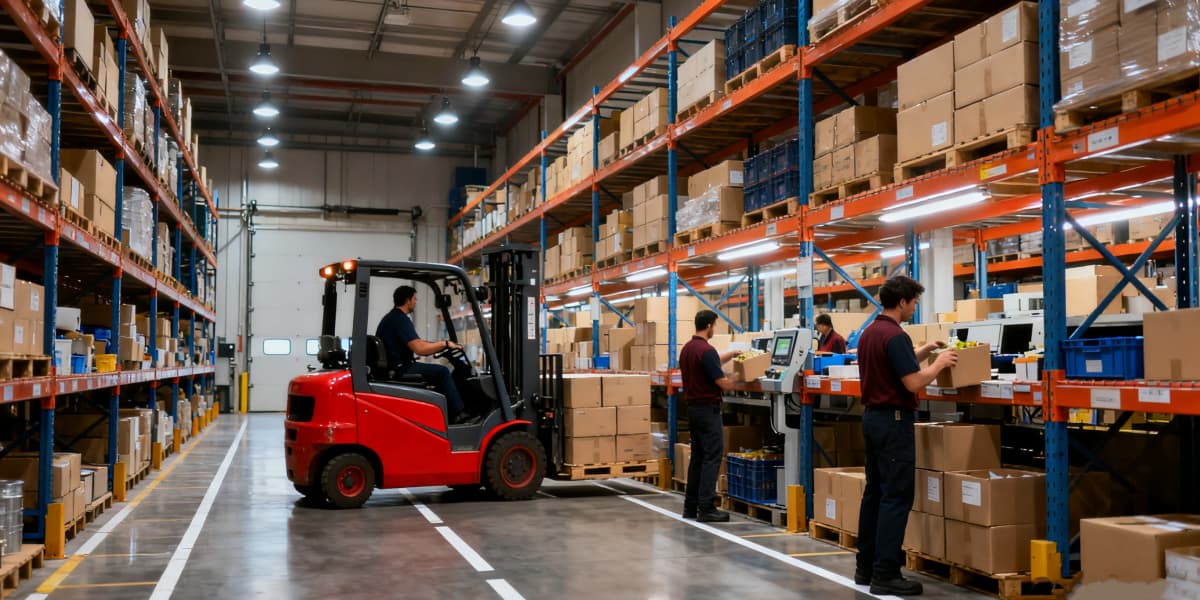
Table of Contents
Introduction – Why Factory Lighting Matters
Key Lighting Challenges in Factory Environments
What Makes a Good LED Factory Lighting?
How to Choose the Right LED Factory Lights?
How to Plan Factory LED Lighting Layout?
Real-World Applications & Case Studies
LED factory lights are the backbone of modern industrial lighting — delivering powerful brightness, long lifespan, and significant energy savings for production facilities, warehouses, and workshops.
Compared with traditional metal halide or fluorescent lamps, LED lighting ensures safer, more efficient, and eco-friendly operation.
In this guide, we’ll explore how to choose the right LED factory light, understand its technical specs, and see why switching to LED is a smart investment for any industrial space.
Introduction – Why Factory Lighting Matters
Factory lighting goes far beyond simple brightness — it serves as the backbone of safety, accuracy, and productivity across industrial environments.
Large-scale facilities often run continuously, housing tall structures, intricate setups, and heavy-duty equipment. Such spaces require steady, powerful illumination that supports precise work and maintains a secure atmosphere.
This is where LED factory lights stand out. Compared to traditional HID or fluorescent lamps, LEDs deliver stronger brightness while consuming significantly less energy. They produce uniform light, prevent flickering, and emit minimal heat — all while offering up to five times the lifespan of older systems.
For factory managers, this translates to lower power costs, reduced downtime for maintenance, and clearer overall lighting across the production floor.
As sustainability and performance take center stage, LED-based solutions are now the preferred choice in modern manufacturing facilities.
Whether upgrading an existing setup or planning a new installation, selecting suitable LED factory lights helps create a safer, energy-saving, and budget-friendly industrial environment.
Key Lighting Challenges in Factory Environments
Factory environments present some of the toughest conditions for lighting systems. High ceilings, wide production areas, dust, moisture, and heat can all affect light performance and safety. Many factories also run 24/7, which means fixtures must handle long operation hours without frequent failures.
Traditional metal halide or fluorescent lamps often struggle under such conditions — they take time to start, lose brightness over time, and require frequent replacements. These weaknesses not only raise maintenance costs but also increase the risk of poor visibility and accidents in the workspace.
In contrast, LED factory lights are engineered to handle these demanding environments. They deliver steady, flicker-free illumination, maintain color consistency, and operate efficiently even in high-temperature or dusty conditions. With an IP65+ protection rating and advanced heat dissipation, LED lights provide durability that traditional fixtures simply can’t match.
Here’s a quick comparison to illustrate the difference:
Feature | Metal Halide / Fluorescent | LED Factory Lights |
Startup Time | Slow (2–5 minutes) | Instant-on |
Energy Efficiency | 60–80 lm/W | 120–150 lm/W |
Lifespan | ~10,000 hours | 50,000–100,000 hours |
Maintenance | Frequent bulb & ballast replacement | Minimal maintenance |
Heat Output | High | Low |
Brightness Decay | Noticeable after 1 year | Stable over years |
This is why most modern factories are shifting to full-LED lighting systems — they not only improve visibility and safety but also bring long-term savings in energy and maintenance.
Next, let’s take a closer look at what defines a truly high-quality LED factory light and which features you should focus on before making a purchase.
What Makes a Good LED Factory Lighting?
When it comes to high bay LED lights for factories, performance and reliability are everything. A well-designed LED factory light should not only illuminate large spaces evenly but also withstand harsh working conditions such as heat, dust, and moisture.
Below are the key technical features that define a high-quality factory lighting system.
(1) High Luminous Efficacy (≥130 lm/W)
Energy efficiency directly affects long-term operating costs. The best factory LED lights deliver at least 130 lumens per watt, converting more power into visible light rather than heat. This high efficacy means brighter illumination with lower electricity bills — a critical advantage for large-scale facilities running 24/7.
(2) High Color Rendering Index (CRI ≥80)
A higher CRI ensures that workers can see colors and details accurately, which is especially important for assembly, inspection, and quality control areas. Poor color rendering can cause visual fatigue or lead to production errors over time. Look for factory LED lights with CRI 80 or above for optimal clarity and comfort.
(3) IP65+ Protection and Durability
Industrial environments often contain dust, humidity, and high temperatures. A minimum IP65 protection rating is essential, while IP67 or IP69K ensures resistance against water jets and corrosion. A rugged housing with an IK08 impact rating also helps protect against accidental bumps or vibrations.
(4) Anti-Glare and Wide Beam Angle Design
Proper beam distribution improves visibility and reduces glare, which is vital for worker comfort and safety. For factory ceilings between 6–15 meters, choose adjustable beam angles (60°, 90°, or 120°) to balance brightness and coverage. Anti-glare lenses or diffusers can further enhance visual comfort.
(5) Long Lifespan and Stable Output
Longevity defines the total value of an LED system. Top-tier industrial LED lights typically last over 50,000 hours, but premium-grade models can reach 100,000 hours (L80B10). This dramatically reduces replacement frequency, labor costs, and downtime.
(6) Example: Ceramiclite HB01 High Bay LED Light
For instance, Ceramiclite’s HB01 LED High Bay Light is engineered specifically for large-scale factories and warehouses. It combines top-tier optical performance with industrial-grade durability:
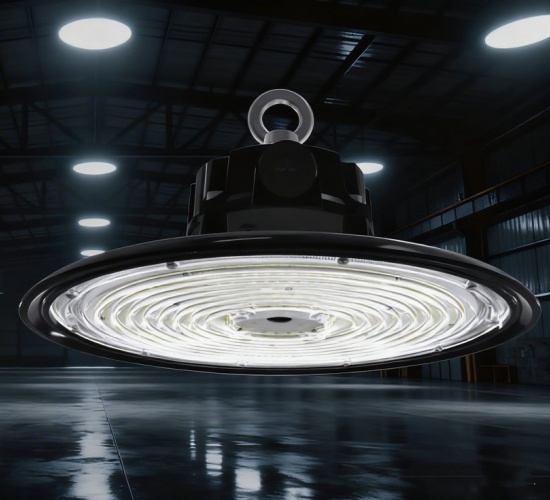
Luminous Efficacy: 160 lm/W (±5%)
Input Power: 60W / 80W / 100W
Input Voltage: 90–240Vac
Color Temperature: 3000K–6000K customizable
CRI: 70 / 80
Protection: IP67 / IP69K, IK08
Lifetime: 102,000 hours (L80B10@35℃)
Certifications: CE, RoHS, UL, ETL
Its flicker-free design, 0–10V dimming compatibility, and robust ceramic LED module make it a reliable solution for continuous industrial use. Built to endure the harshest factory conditions, HB01 demonstrates what high-performance LED factory lighting should deliver: efficiency, endurance, and precision.
How to Choose the Right LED Factory Lights?
Selecting the right LED lights for factory isn’t just about brightness — it’s about matching the lighting performance to your factory’s working conditions. Here are the key factors to consider before making a purchase.
Step 1: Match Brightness to Ceiling Height and Task Area
Every factory layout is different. Taller ceilings and wider areas require stronger lumen output and narrower beam angles.
6–8 m height: 60–80W fixtures with 120° beam angle
9–12 m height: 100–150W fixtures with 90° beam angle
13 m+ height: 200W+ fixtures with 60° beam angle
Ensure each work zone meets its illumination standard (usually 300–500 lux for assembly lines). Over-lighting wastes energy, while under-lighting can affect accuracy and safety.
Step 2: Check Environmental Resistance
Industrial LED light fixtures must survive tough conditions such as dust, moisture, heat, or vibration. Look for lights rated at least IP65, and ideally IP67 or IP69K for harsh environments like food processing or metal workshops.
If the area experiences strong vibrations or temperature fluctuations, choose fixtures with solid aluminum housing and anti-vibration mounting brackets.
Step 3: Prioritize Energy Efficiency and Safety Certifications
Efficiency and compliance go hand-in-hand. Always verify that the product meets UL, DLC, CE, or RoHS certifications.
These not only confirm safety and quality but may also qualify your project for energy rebates or government incentives. Opt for fixtures with Power Factor ≥ 0.9 and efficacy above 130 lm/W to ensure both performance and savings.
Step 4: Evaluate Warranty and After-Sales Support
Industrial lighting is a long-term investment. A reputable manufacturer should provide at least a 5–10 year warranty and professional technical support. Avoid low-cost, uncertified products that often fail early or lack replacement parts.
Check whether the supplier offers custom lighting design or on-site guidance for installation — this often reflects their reliability and commitment to customer satisfaction.
Step 5: Look for Smart Controls and Integration Options
Modern factories are adopting smart lighting systems that automatically adjust brightness based on occupancy or daylight. Choose fixtures compatible with:
0–10V / DALI dimming
Motion or daylight sensors
APP or centralized control systems
These intelligent functions reduce unnecessary power consumption and enhance worker comfort, especially in large-scale production areas.
Choosing the right LED factory lights ensures consistent brightness, lower operating costs, and safer working environments for years to come.
Ceramiclite provides professional-grade LED factory lighting with a 10-year warranty and full customization — designed to meet every industrial challenge with precision and reliability.
How to Plan Factory LED Lighting Layout?
A well-designed factory lighting layout ensures that every corner of the workspace is properly illuminated — improving visibility, productivity, and worker safety. Whether upgrading an old system or building from scratch, lighting design should be based on task requirements, ceiling height, and light distribution.
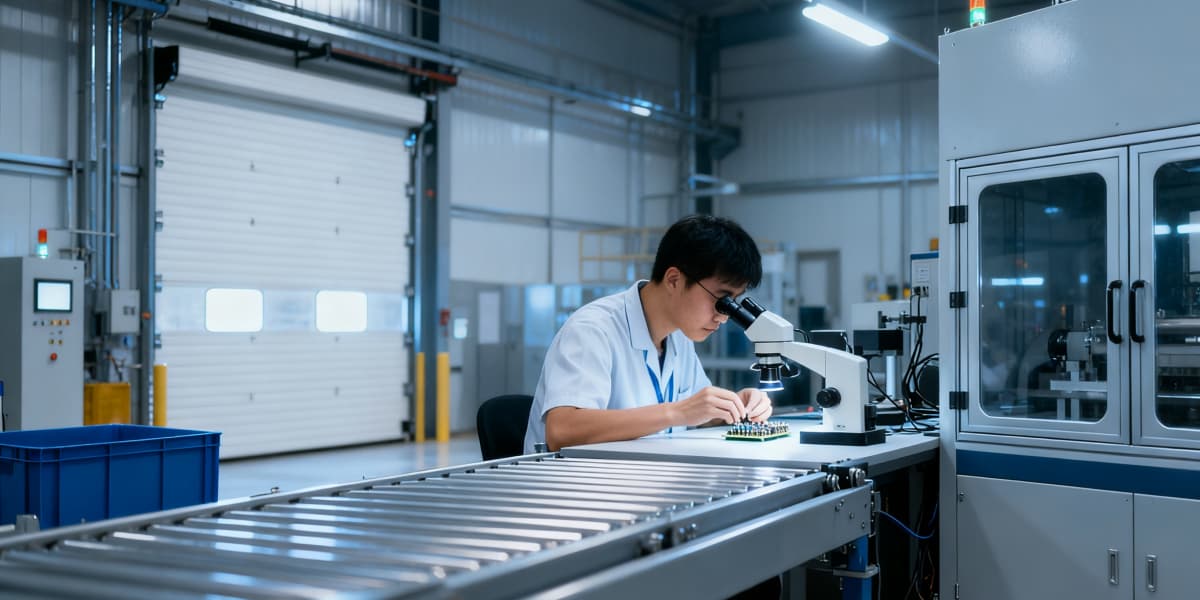
Electronic and Electrical Appliance Factories (AI-generated simulation image)
Step 1: Understand Illumination Standards
Before selecting or positioning fixtures, determine the proper brightness level (lux) for each area according to international standards such as EN12464-1 and OSHA guidelines:
Factory Area | Recommended Illuminance (Lux) | Description |
Assembly Line | 300–500 lux | Bright and uniform light for precision tasks |
Warehouse / Storage | 150–300 lux | Balanced brightness for navigation and safety |
Precision Inspection | 500–750 lux | High visibility for detailed work |
Packaging / Loading | 200–300 lux | Moderate lighting to reduce glare |
Aisles & Corridors | 100–200 lux | General visibility for movement |
Adequate lighting levels prevent eye strain and accidents while maintaining production accuracy.
Step 2: Calculate Mounting Height and Beam Angle
The mounting height directly affects how light spreads across the workspace:
6–8 meters: Use 120° beam angle for wide coverage.
9–12 meters: Use 90° beam angle to balance intensity and reach.
13+ meters: Use 60° beam angle to concentrate light on target areas.
A narrower beam concentrates light downward, ideal for tall ceilings, while a wider beam suits open-floor areas where even illumination is required.
Step 3: Optimize Fixture Spacing
To maintain uniformity, space fixtures evenly based on their beam angle and mounting height.
A practical rule of thumb is:
Spacing (S) ≈ 0.8 × Mounting Height (H)
For example, if fixtures are mounted at 10 meters, the ideal spacing between lights should be around 8 meters. This helps achieve balanced brightness without dark zones or excessive overlap.
Step 4: Consider Reflectance and Color Temperature
Reflective surfaces (white walls, bright flooring) increase light efficiency by up to 20%. Choosing the right color temperature (4000K–5000K) creates a neutral white tone that enhances visibility and alertness — ideal for production lines and assembly areas.
Step 5: Run Lighting Simulations or Pilot Tests
Before final installation, conduct a lighting simulation using software like DIALux or Relux. Simulations visualize how light spreads, identify potential shadow zones, and estimate total energy consumption.
Alternatively, install a sample fixture in each zone to compare brightness and coverage in real conditions before scaling up the design.
A well-planned factory lighting layout not only meets industry standards but also minimizes energy waste and maximizes visual comfort. By aligning fixture type, layout, and brightness with your factory’s workflow, you’ll achieve both safety and efficiency.
Next, we’ll look at real-world examples of how LED factory lights perform in different industrial environments.
Real-World Applications & Case Studies
Here are a few real-world examples that show how the right lighting design can dramatically improve productivity, safety, and energy efficiency.
Case 1: Automotive Manufacturing Plant – High Brightness & Uniform Coverage
In a car assembly workshop, workers perform detail-oriented tasks that demand excellent visibility. Ceramiclite’s HB01 high bay LED lights were installed at a height of 10 meters, delivering over 500 lux across the work area.
The result? A 45% energy reduction compared with the previous metal halide lamps, plus significantly better color accuracy for quality control. The uniform beam angles (90°/120°) helped eliminate shadows on assembly lines, improving workflow safety and precision.
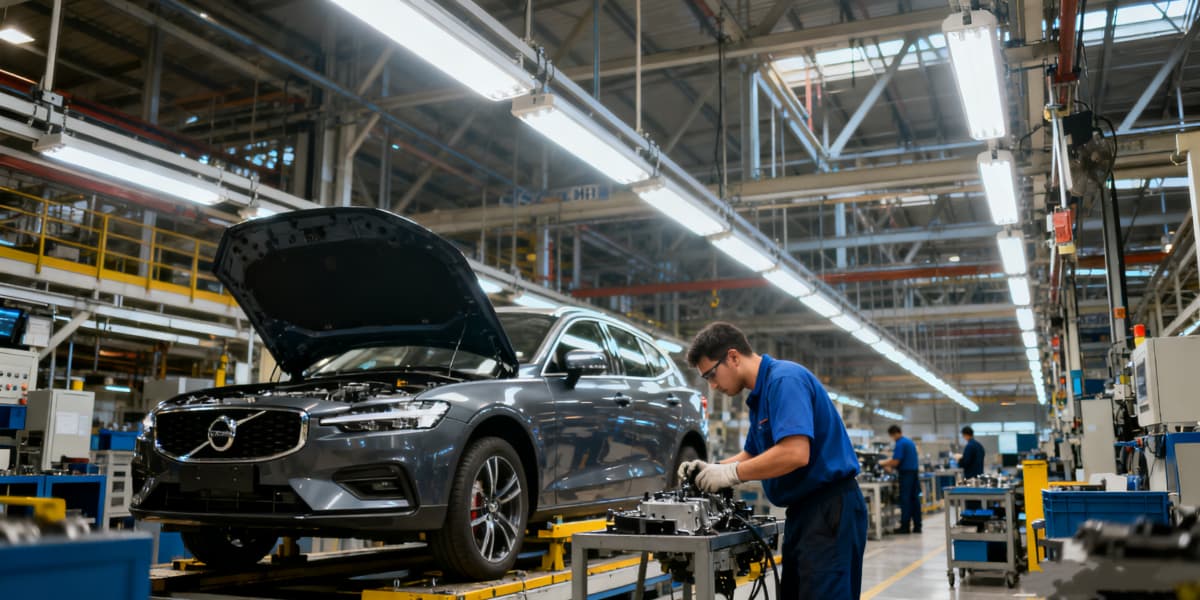
Automotive Manufacturing Factories (AI-generated simulation image)
Case 2: Food Processing Factory – Hygienic, Moisture-Proof Design
A food packaging facility required lighting that could withstand frequent washdowns and meet hygiene standards. The IP69K protection of Ceramiclite HB01 made it an ideal fit — fully sealed against water, dust, and steam.
After upgrading from fluorescent fixtures, the factory achieved a 42% cut in power consumption and extended maintenance intervals from 6 months to over 5 years, thanks to the fixture’s 102,000-hour lifetime and anti-flicker technology compliant with ErP standards.
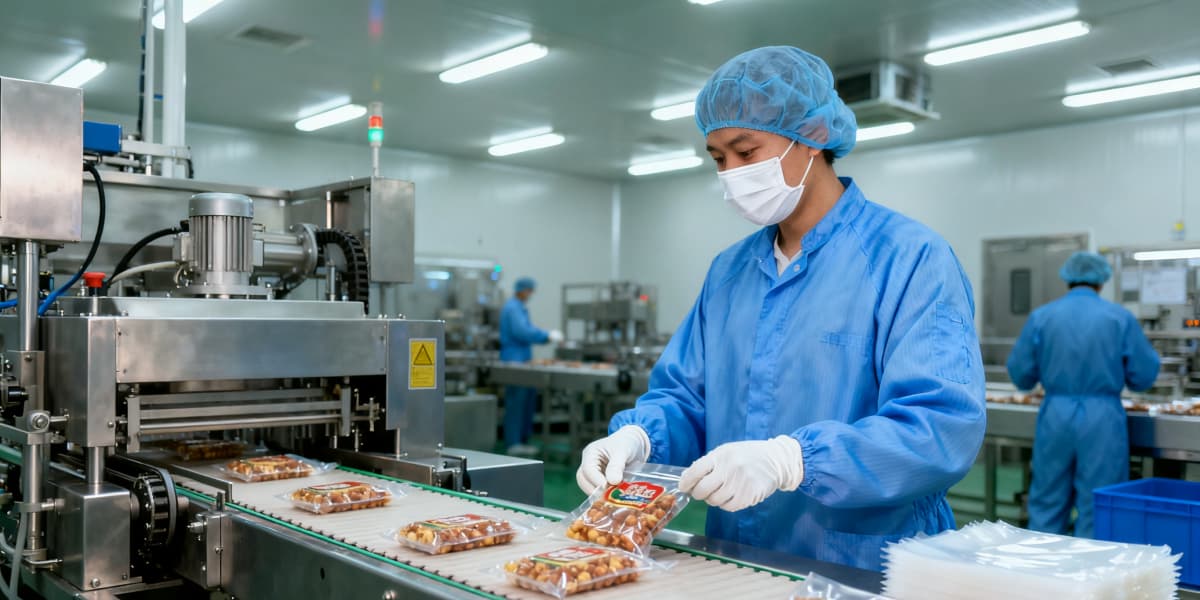 Food Processing Factories (AI-generated simulation image)
Food Processing Factories (AI-generated simulation image)
Case 3: Logistics & Warehouse Center – Smart, Long-Hour Operation
In a 24/7 warehouse, energy management was key. The facility implemented HB01 lights with 0–10V dimming and motion sensors, automatically adjusting brightness based on occupancy and daylight. This system lowered operational costs by over 40% annually while maintaining consistent 300-lux illumination in key zones.
Key Takeaway
Across industries, Ceramiclite’s factory lighting solutions prove that well-designed LED systems can deliver measurable results — higher efficiency, lower costs, and safer working conditions.
Whether you run a precision assembly plant or a large warehouse, Ceramiclite helps you design, supply, and optimize the perfect LED lighting layout for your facility.
Conclusion
Upgrading to LED factory lighting isn’t just about switching bulbs — it’s about transforming the way your facility works. High-performance LED lights deliver powerful brightness, up to 60% energy savings, minimal maintenance, and enhanced safety through flicker-free, glare-controlled illumination.
With smart dimming and sensor options, modern LED systems also adapt to real-time needs, reducing waste and optimizing every watt of power used.
Ceramiclite’s factory lighting solutions combine industrial durability with intelligent control, helping manufacturers create cleaner, safer, and more productive environments.
Discover how Ceramiclite’s industrial lighting solutions can help you build a brighter, safer, and more efficient production space.
_thumb.jpg)